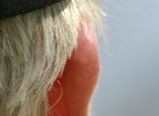Is art made by a machine still art?
Photography has a long way to go. Compared to other digitized creative forms, like music, it is light years behind. And, for once, that could be a good thing. Like the youngest brother of a family, it can learn from its elders. For once, it has not yet been touched, at full impact, by the whole free file sharing tsunami that hit music a while back. Certainly the dams are leaking and breaking, but we are nowhere near what the music industry has experienced.
Unlike the music industry, the photo industry is not that organized. It has a myriad of little associations biting at each other, with little or no resources. It is deeply fragmented in small to very small businesses and it has no support from giant manufacturers. But this is not the point of this entry.
The story of David Cope, very well explained in this article (careful, it’s long) is a great example of things to come. In a nutshell, for those that are too busy, it explains how this music composer, rather than writing music himself, taught his computer how to do it. At first he experimented in replicating styles of well known composers. This had little successes, as he had forgotten to add their flaws (or styles). But when he got it right, it turned into one of these Shakespearean monkeys (you know, the ones you put in a cage with a typewriter).
This was not enough for him, so he proceeded in developing a system that could compose complete originals pieces of music. This is where he reached a new milestone. The result was so good that many music critics loved it. That is… before they knew it was a machine that had composed it, and not a human being. Then the rhetoric changed and David Cope is still being cursed at. While he is getting ready to make his work more available, the debates still rages on with the main theme:Â
Is art made by a machine still art?
His point, well taken, is that it doesn’t matter if he uses a pen and paper or programming code to compose, it’s still art. The Human being is still behind the creation, he is just using different tools.
Photography is still far from being able to be produced by a machine. We have face recognition, sound detection, automated colour correction, highly sophisticated light readers. None yet really work together, but, in theory, they could. And in theory, one could program all the parameters of David Lachapelle’s past work and come out with an almost perfect suggestion of what his next images will look like. We would still need a human being to set everything up and take the picture.
But let’s take this a step further. In theory, we could give every parameter of a photographer works and produce, in a computer, a CGI image of the next shoot, completely automated. No need for camera, lights, studio, models, nothing. Everything could be created artificially either by taking existing images and reconfigure them, or simply create new ones. Or, instead of replicating someone’s style, create a whole new one. Create a picture, or a series of picture, at a touch of a button.
This is coming our way, faster than we think. If you are worried about the myriads of microstock shooters, just think of what happens when anyone, even without a camera can create stunning images without ever leaving their desks, for a fraction of the cost. Just think about it. Everything you thought you knew about photography is, yet again, about to change.
(As I was writing this, French newspaper Le Monde published this article about the same issue, but for text journalist.)
 “This business has too many Surveyors and not enough Bohemians†   Roger Therond , legendary photo man, once said to a good friend of mine, Eliane Laffont. This blog is about restoring the balance and letting the Bohemians talk.
“This business has too many Surveyors and not enough Bohemians†   Roger Therond , legendary photo man, once said to a good friend of mine, Eliane Laffont. This blog is about restoring the balance and letting the Bohemians talk.
 Paul Melcher  has been named one of the “50 most influential individuals in American photography†by American Photo. He is currently senior vice president of the PictureGroup. He writes the Thoughts of a Bohemian blog

